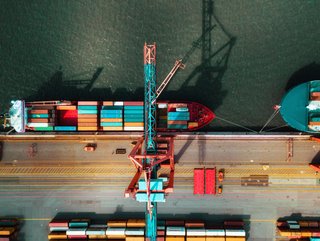Efficio: 5 impacts of Russia-Ukraine on global supply chain

As the conflict continues to ripple around the world, the knock-on effect of the war in Ukraine on the global supply chain is in full force. Recovery from the long-lasting impact of the pandemic is far from over; yet recent months have seen supply chains descend into further turmoil with prices of key commodities, such as oil and gas, rocketing sky-high and suppliers being forced to explore alternative sources as raw material supplies face further disruption. In fact, in March, after Russia invaded Ukraine, official data revealed that UK motorists were hit by the steepest weekly rise in fuel prices in more than 18 years.
On top of the existing friction faced by businesses and sectors worldwide, recent sanctions imposed on Russia will continue to add further strain to an already-fragile supply chain by further limiting options for international trade. This is further exacerbated by China’s “zero covid” policy and ports being shut down.
With no clear end in sight, it is important for companies to truly understand the impact the crisis is already having and will continue to have on their operations – and how they can best prepare for further change and challenge.
Here are five key trends that are emerging that businesses should be aware of:
1. Rising commodity prices
As we have already witnessed, commodity prices have seen a colossal spike as a direct impact of supply disruptions. This comes after a time in which markets have already seen periods of great impact from COVID and other existing supply chain challenges. In fact, as time goes on, the war is likely to have a continued inflationary impact on the costs of raw materials, energy, logistics, and digital services. Oil and gas prices, in particular, have already skyrocketed across the globe due to the high dependence on imports from Russia, the supplier of 40% of Europe’s gas. According to recent reports, this continued rise in energy costs is having a negative impact on the eurozone economy, which has seen growth continue to slip. An indirect and lagged impact on resins and petrochemicals is also expected as the rising prices of upstream resources (crude oil and natural gas) drive up the cost of production, causing possible logistical disruption.
But energy isn’t the only industry to suffer from such price hikes. Key metals such as aluminium, nickel, platinum, and copper are all expected to be impacted – which will have a knock-on effect on cost across industries using these materials.
2. Material shortages and the search for alternative sources
This rapid price inflation is forcing companies across the globe to explore alternative sources – not just to find cheaper material, but material that is not going to be accessible throughout the current supply chain woes facing the industry.
For example, Ukraine and Russia collectively are the top exporters of corn and wheat, which means the supply of major grains will likely be impacted, increasing prices of bread and other goods.
Russia is also the world’s biggest exporter of all three major groups of fertilisers, again pushing up input costs. This could lead to a potential food crisis in major importing regions, including the Middle East and North Africa, if alternatives are not found quickly.
We also expect to witness further disruption in the supply of metals, plastics, and semiconductor chips, which will impact the production of medical devices. Russia is a key player in the mining of palladium (45%) and platinum (15%) and possible international trade sanctions by the EU and US on Russia are likely to disrupt exports of these metals.
As a result of such shortages, we foresee a shift in flows of raw materials toward Asia. These changes are not permanent but are unlikely to change in the short to medium term. As a consequence, raw materials will be available in new geographies/markets under different conditions, with new suppliers and prices, and their availability may be limited.
3. A squeeze on labour
In addition to sourcing alternative materials, businesses are also under pressure to find additional labour. Since the conflict began, there has been a restriction in labour supply in Eastern Europe which has again led to – you guessed it – increased cost. International Chamber of Shipping (ICS) data notes that Russians account for 10.5% (198,123) of the global shipping workforce, with Ukraine providing 76,442 (or 4%). Many businesses are now exploring options in Africa and South America, especially for labour-intensive applications moving away from Eastern Europe.
This is particularly important for industries such as agriculture and farming, which rely on a large percentage of foreign seasonal workers on a short-term basis to harvest crops.
4. Logistical disruption
Obviously, global supply and demand have both been massively impacted since 2020, leading to supply chain shortages. There has been a surging demand, particularly for consumer goods, in advanced economies, increasing demand for goods from Asia. On the supply side, Chinese factory port closures and labour shortages in the ports of importing countries have created significant delays and few available ships. Meanwhile, main Western ports have reported significant backlogs and stranded containers, in turn contributing to the shortage of containers. The war has only disrupted logistics movement further with all areas of logistics now impacted, including airlines, ocean freight, and rail freight. We can also expect disruption of the last-mile sections of the supply chain – an area that was already deeply impacted by the pandemic and recent fuel and HGV driver shortages.
To limit disturbance in this area, businesses will need to have greater transparency over planned transport, capacities, and relevant alternative routes. Creating strategic relationships and joining alliances will also be essential to ensuring capacities, should further hurdles occur. In this time of constant change and volatility, businesses simply cannot afford to rely on outdated information or put all their eggs in one basket by giving all volumes to one freight forwarder.
5. Greater focus on risk management
The above trends – cost, logistical disruption, and shortages in material and labour – all point to our fifth and final trend – a greater focus on risk management. The current crisis has highlighted the need for organisations to improve the visibility of supply chains where risk is often hidden in sub-tier suppliers. Questions such as “Who are our suppliers’ suppliers?” and “Where do the raw materials required originate from?” may seem obvious, but this level of visibility and understanding of where potential risk could lie is extremely important for organisations to be able to respond and adapt to further disruption. Supply chain managers will be focused on building resilience in their operations, and that all begins with visibility and preparedness.
In fact, we will see organisations moving away from Just-In-Time (JIT) inventory management to Just-In-Case (JIC) inventory management. Regionalisation and in-country supply are also becoming more attractive options in terms of the safety, security, and the stability they afford.
Remaining resilient
As the current crisis continues to develop, businesses today must ensure they build resilience into their supply chains to face the immediate impacts along with future disruption that may lay on the horizon. This begins with evaluation – evaluating alternative suppliers and re-evaluating contracts. Businesses should be prepared to switch or to qualify alternative sources for procuring essential products and services. Conducting a risk assessment of strategic suppliers to minimise supply chain disruption is also essential, as is re-considering existing contracts with those who have been sanctioned and ensuring the inclusion of adequate safeguards in case an escalation occurs.
Optimisation and improved inventory and labour planning will also be key. This includes carrying out a detailed assessment of inventory levels and labour in the short and long term and ensuring required inventories are in place in case of supply chain disruption. Above all, organisations need to continue to monitor the situation closely in order to remain agile.
There is no crystal ball; however, being better prepared for further cost increases – and allocating provisions in anticipation of cost increases of fuel/utilities and certain raw materials, in particular – will go a long way to steer the course during these inflationary times.
About Efficio
Efficio is the world’s largest procurement and supply chain consultancy, helping clients to identify, deliver, and sustain improvement opportunities. Our international team combines unparalleled expertise and industry experience with a unique blend of intellectual capital and technology to deliver results and advance our clients’ procurement and supply chain capability.






